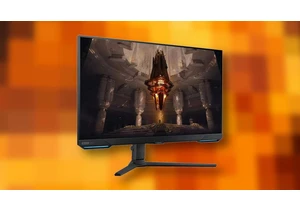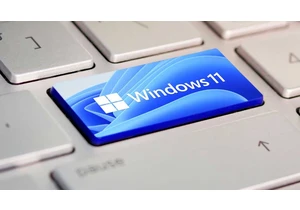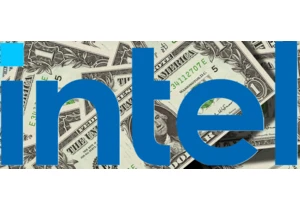AMD’s share in the desktop PC market climbed by a mammoth total of 9.2 percentage points versus last year, a ringing endorsement for AMD’s Ryzen chips and especially its X3D lineup of gaming processors.
AMD snatched headlines for its first-quarter performance, where its desktop market share grew by 4.1 percentage points, or just 0.9 of a percentage point from the previous quarter. During the second quarter, AMD’s share climbed 4.2 percentage points in just a single quarter, and 9.2 percent from the second quarter of 2024.
In all, AMD now owns basically a third of the desktop PC market, at 32.2 percent. That represents record revenues for AMD, according to the company, and a record high in terms of unit share, according to Mercury Research, which produced the market-share estimates.
Intel, too, found something to be proud of: a quarter-over-quarter increase in mobile processors, which has been a key focus of the company over the past few years. But Mercury’s numbers also sparked some questions about Arm: Chromebook sales shrank, and the percentage of Arm chips in Chromebooks also fell. Overall, Chromebooks, PCs, and Macs using Arm saw their market share percentage slightly dip to 13.2 percent, down from 13.9 percent.
AMD continues to rapidly gain ground in desktop
Overall, AMD’s share of the X86 market increased to 24.2 percent, up 2.9 percentage points from a year ago. In client shipments (desktop, mobile, and server) it was virtually the same, with AMD gaining 2.8 percentage points to 23.9 percent. Intel owns 75.8 percent of the overall X86 market and 76.1 percent of the client market, according to Mercury.

Essentially, AMD is aligning itself with the gaming market more than ever before. Mercury noted that AMD had reported a mammoth 73 percent sequential revenue increase in its gaming segment for the second quarter, primarily driven by the SOCs that AMD ships into the Microsoft Xbox and Sony PlayStation platforms.
That, combined with AMD’s desktop share, resulted in a big win for AMD. AMD’s Ryzen 7 9800X3D “obliterated” Intel’s best in late 2024, and the momentum has continued. That has to be due to the lukewarm reception of Intel’s lackluster gains in its 13th- and 14th-gen desktop Core chips, as well as the current “Arrow Lake” processors.

Mobile is where AMD has treaded water, never really making substantial inroads into Intel’s market share. Qualcomm and Arm PCs have done slightly better, at least in mindshare. But Intel continues to keep owning the laptop market, maintaining the traditional 80/20 ratio that has defined the X86 market for seeming decades.
“This may be due in part to consumer mix-related weakness, and Intel’s business-related share gains — typically the first half of the year strongly favors business PCs over consumer,” Mercury principal analyst Dean McCarron wrote in a note to clients and journalists. “On-year AMD’s share was very slightly higher. Both suppliers seem to have seen stronger high-end activity in the quarter, with Intel seeing more Arrow Lake PCs on the market and AMD seeing an increase in Strix Halo [the Ryzen AI Max processor] and Fire Range.”

Neither company made much movement in servers from the first to second quarter, although AMD’s share in the server market climbed 3.2 percentage points to 27.3 percent, leaving Intel with the remaining 72.7 percent.
Outside of strong growth in the IoT/SOC market, “it was a very normal second quarter for the conventional X86 market,” Mercury’s McCarron wrote.
https://www.pcworld.com/article/2878869/amd-continues-to-kick-ass-and-take-names-in-desktop-pcs.html
Войдите, чтобы добавить комментарий
Другие сообщения в этой группе

Welcome to The Full Nerd newsletter—your weekly dose of hardcore hard

Have you ever found yourself having to constantly write out or say yo

If you’ve been looking to upgrade your monitor, this 4K Samsung model

Although support for Windows 10 will not end in October 2025 after al


Believe me, I get it–asking an AI chatbot to turn a picture of your p

The U.S. government is discussing whether it will take a stake in bel
